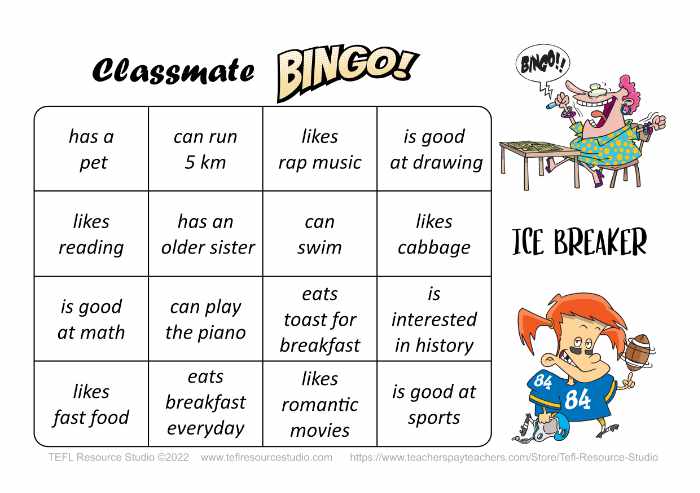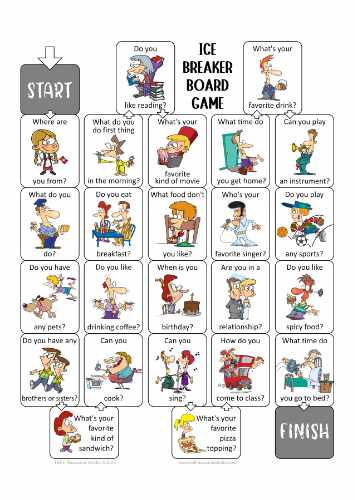10 Fun and Effective Icebreaker Activities for Adult ESL Students
Starting a new ESL class can be both exciting and nerve-wracking—for students and teachers alike. Icebreaker activities are a great way to ease first-day jitters, encourage communication, and help learners build confidence in their speaking skills from day one.
Below are 10 tried-and-tested icebreakers that work particularly well with adult ESL learners. They’re adaptable, interactive, and designed to get students talking, listening, and learning about each other in a supportive environment. While these icebreakers are designed with adult ESL learners in mind, they also work well with older kids and teens.
1. Speed Chat
Think “speed dating,” but for language learners. Arrange students in two rows facing each other. They have one or two minutes to ask and answer simple questions (e.g., “Where are you from?” “Do you have any pets?”) before rotating to a new partner. This fast-paced activity builds fluency and helps students meet many classmates quickly. You can write suggested questions on the board in case students get stuck. If space allows, try an “onion skin” setup with two concentric circles—students in the inner circle face outward, while the outer circle faces inward and rotates.
2. Mini Surveys
Perfect for lower-level students who need more structure. Provide a list of questions, and have students ask 3–4 classmates, recording their answers. Include basics like name, nationality, and hometown, along with more personal topics like favourite food, music, or pets.
For mixed-level groups, include space for students to write their own question at the end.
I’ve created a set of three mini-surveys at different levels, available on my TPT store.
3. “Me Too” Circles
Have students stand in a circle. One student steps into the middle and shares a true statement about themselves (e.g., “I have two brothers”). Anyone for whom this is also true steps into the circle, says “Me too!”, and steps back.
This movement-based activity builds group connection through shared experiences and is especially effective with kinesthetic learners.
4. Similarities and Differences
Put students in small groups and ask them to find five things they all have in common. Demonstrate with a closed question like “Do you like pizza?” Once they’ve found five similarities, ask them to find five differences—one from each student. This time, open questions work best (e.g., “What’s your favourite drink?”).
5. Introductions / Introduce a Partner
Have students prepare a short self-introduction (name, country, job, hobbies, etc.). For a twist, ask them to interview a partner and present that person to the class. For lower-level learners, provide support with prompts or try our free Introduction Pair Worksheet. This activity works well with confident groups, but you may want to skip it with shy or introverted students.
6. Icebreaker Bingo
A classic mingle activity! Students receive a bingo sheet with prompts and walk around asking closed questions (e.g., “Do you play the guitar?”). If a classmate says “yes,” they mark that square. I usually ask students to complete three lines before sitting down.

You can adjust prompts to fit the level and use this to assess question formation skills.
We have a variety of Icebreaker Bingo activities on TPT—and you can grab a free one (plus more icebreakers) by joining our mailing list.
7. Alphabet Introduction Game / Name Tennis
Alphabet Introduction Game: Go around the class with students saying their name and a word that starts with the same letter. Example: “I’m Anna and I like apples.” You can extend it to memory practice: the next student repeats all previous ones (“That’s Anna who likes apples. I’m Ben and I like books”).
Name Tennis: In a circle or two lines facing each other, students toss a soft ball to each other. But before they toss, they must call out the student’s name.
Version 2: A mashup of the two activities above. The student with the ball says their name and a fact (“I’m Sam and I like swimming”). Then thy call the name of another student before tossing the ball to them. Their partner repeats and adds their own (“He’s Sam and he likes swimming. I’m Rachel and I like reading”). This continues until students are more confident at calling their classmates names out.
8. Icebreaker Board Game
Everyone loves a board game! A light conversation-style board game can get students talking in small groups. Choose one slightly easier than your class’s level for the best results.

Board games are especially useful when class numbers are low (fewer than 8–10 students), when mingle activities tend not to work so well.
We have dedicated icebreaker board games for kids and adults — check them out here.
9. Question Dice
Use a large foam die or a printable dice template with question prompts on each face (e.g., “What’s your favourite food?” “Where did you grow up?”). Students take turns rolling and answering.

It’s low-pressure, engaging, and can be reused throughout the year.
Alternatively, try a question dice worksheet for less prep. We’ve got some for Elementary level, Intermediate and Advanced.
10. Questions for the Teacher
Let your students ask you the questions! This is a great follow-up to Activity #4 and gives learners a chance to get to know you.
In groups, students brainstorm five open-ended questions they’d like to ask you. (No yes/no questions allowed!) Once they’ve chosen their top 1–2 questions, write them on the board.
Now the fun part: students guess your answers and write them on the board. After that, reveal the real answers and award points—2 for a great guess, 1 for a reasonable one. It’s a great way to build classroom rapport.
Final Thoughts
Icebreakers aren’t just for day one—they’re a powerful tool for group bonding and can help even shy students feel more comfortable over time. Try mixing and matching activities depending on your class’s level, personality, and group size.
Want more ready-made resources? We’ve got a whole bundle of printable icebreakers over on TPT—including mini-surveys, classmate bingo for multiple levels, and board games.
You can also get a selection of free icebreakers (and stay up to date with our latest resources, offers, and blog posts) by joining our mailing list.
Did we miss your favourite icebreaker? Let us know what it is in the comments below.

